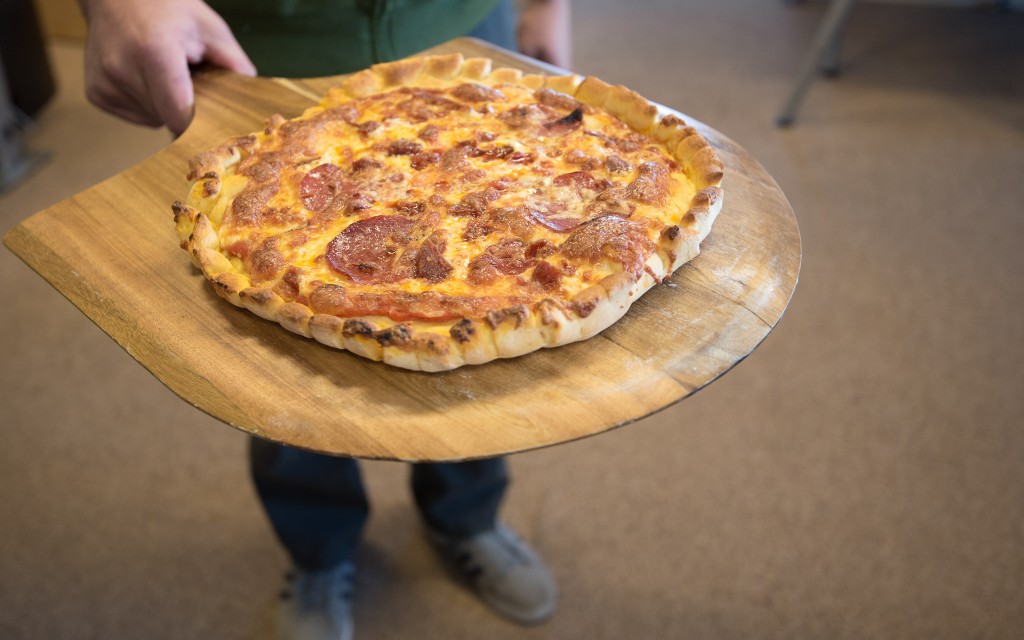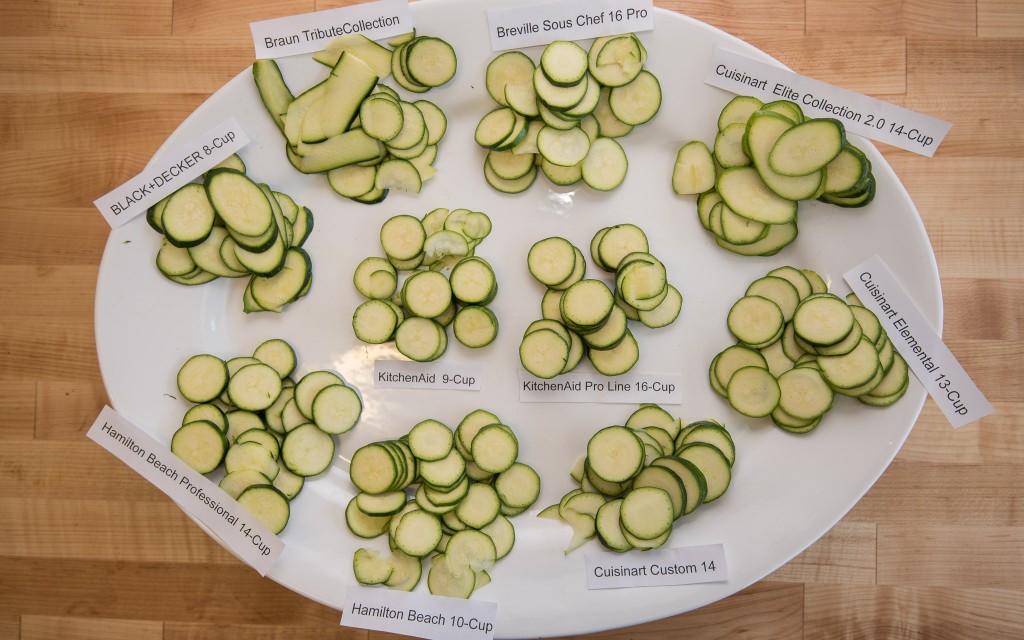In our test kitchen, we did enough food prep to feed a veritable army and then split the testing process into six metrics: chopping, slicing, shredding, mixing, pureeing, and cleaning. Each model's performance was compared head-to-head with its competitors until some clear winners emerged.
Chopping
Our chopping test consisted of three different food tests — onions, carrots, and nuts — where a panel rated the quality of the finished product, and a "Pulse" button test, where we evaluated how long it took for the blade to stop spinning when the button was released.
For the onion test, we were looking for a uniform chop with no leftover large pieces. We also were looking for properly chopped onions, not mush, and docked points from models that were a little overzealous in their processing.
We performed a similar test on carrots, but in addition, we recorded the number of pulses it took to achieve the desired result. We also chopped almonds and compared the result, looking for small uniform pieces, no residual large almonds, and little to no pulverized almond dust.
Mixing
For the mixing test, we made pizza dough, pie crust, and mayonnaise from scratch. We used the same pizza dough recipe in each machine and ranked them in the quality of the dough produced and how much the machine struggled — if at all — while mixing it. Of course, we also rolled out the dough and made pizzas with the products in a toaster oven.
We performed the same test with pie crust, rolling it out to find any inconsistencies in the dough and rating it. We used a standard recipe for the mayonnaise test and saw if the machine could successfully make mayo in the amount listed.
Pureeing
We made copious amounts of hummus, nut butter, tomato sauce, applesauce to determine which models pureed the best, as well as filling each bowl to its maximum fill line with water and running the machine to check for leaks.
We aggregated the tasting score of our panel to rank the machines in terms of hummus quality, looking for the smoothest, most consistent hummus.
We mixed tomato sauce and applesauce in each appliance and then rated the finished products for consistency and quality. We did a similar process for nut butter, though it was necessary to factor in whether or not the machine required human assistance to actually make nut butter and whether or not it even finished grinding the nut butter. Some machines did very well, while others did not.
Finally, we conducted our leak test. We filled each model with the maximum amount recommended in the user manual or marked on the bowl and then ran each model to check for leakage. The results were varied; some models retained all of the fluid, while others leaked horribly.
Shredding
We set up each food processor with its shredding disc and tested its performance on cheese, potatoes, and carrots. We also awarded more points if models had adjustability when it came to shredding settings.
We were looking for shredded food that was even and defined, not too stringy or crumbled. We also looked at how efficient each machine was and how much residual food became trapped between the disc and the lid. Extra points were awarded to machines with large enough openings that the food required minimal trimming.
Slicing
Slicing tests were conducted almost identically to shredding, except that we used tomatoes, zucchini, and potatoes. We looked at how difficult it was to set up the slicing disc, whether or not we could adjust the thickness of the slices. We also gave a higher score to models with adjustable settings corresponding to real units, preferring 2mm-10mm over an arbitrary 1-10 scale.
We were specifically looking for models that produced even slices of consistent thickness without any taper. We also compared the amount of unsliced food trapped between the lid and the disc and if we had to slice the food to fit in the feed tube.
Cleaning
After completing all of the other tests, we understood which ones were easy to clean and which ones weren't. We broke the score into three parts, separately rating how easy it was to clean each model's blade, lid, and bowl, noting if there were any nooks and crannies that made it easy to trap food.










